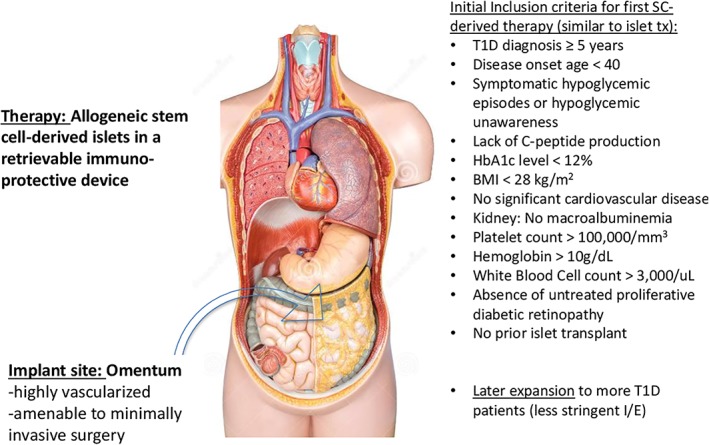Figure 2.

A vision for the future of islet transplantation. Stem cell‐derived islets, although allogeneic, have the advantages over cadaveric islets of being prequalified during product development, and the transplantation of these islets can be timed to suit the recipient. Because pluripotent stem cell‐derived islets are allogeneic (and will be for the near future because of the expense of generating multiple lines) they will require encapsulation in a device that protects them from the host immune system. The goal of encapsulation is elimination of the need for pharmacologic immunosuppression. The omentum is an optimal site for transplantation because of its rich vascularity and it is amenable to minimally invasive surgery for both implantation and retrieval. Initially inclusion/exclusion criteria for stem cell‐derived islets will be similar to those for cadaveric islet transplantation, until the risks and benefits are better understood. Demonstrated safety and efficacy with stem cell‐derived islets is likely to lead to islet transplantation offered to a larger population of patients with type 1 diabetes than currently treated with cadaveric islets. Source: Copyright free from https://www.dreamstime.com/confirm.php?changeuname=1.
